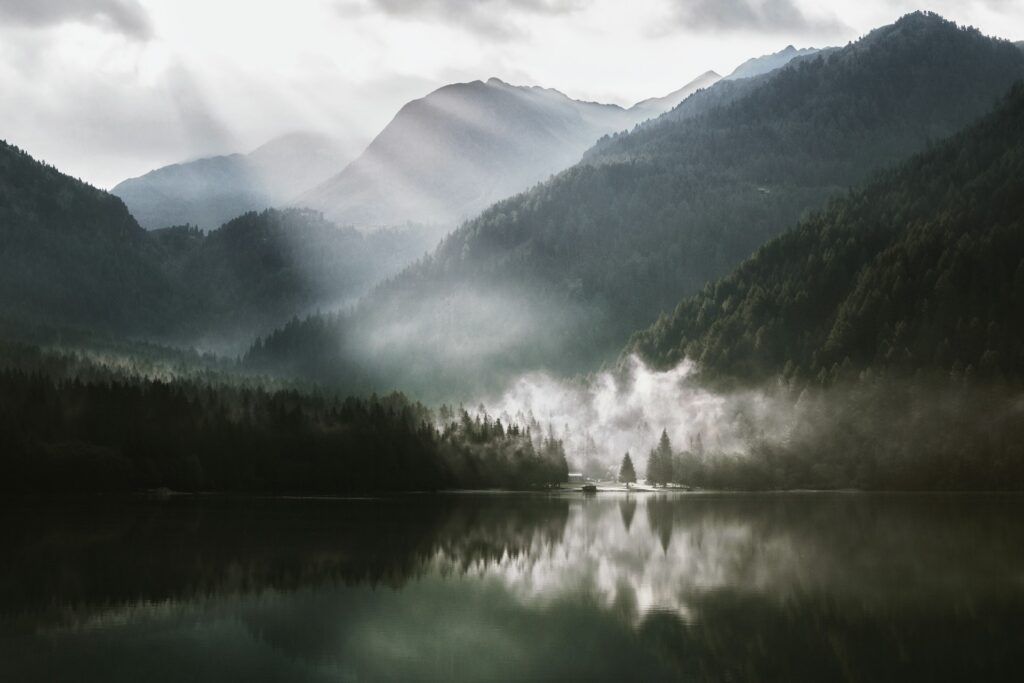What better way to celebrate and honour Earth Day than write about water photography? Over seventy percent of the earth is covered in this beautiful and crucial resource. Within us? Water is about 60% of our internal structure. Water surrounds us in oceans, rivers, streams, glaciers and vapors.
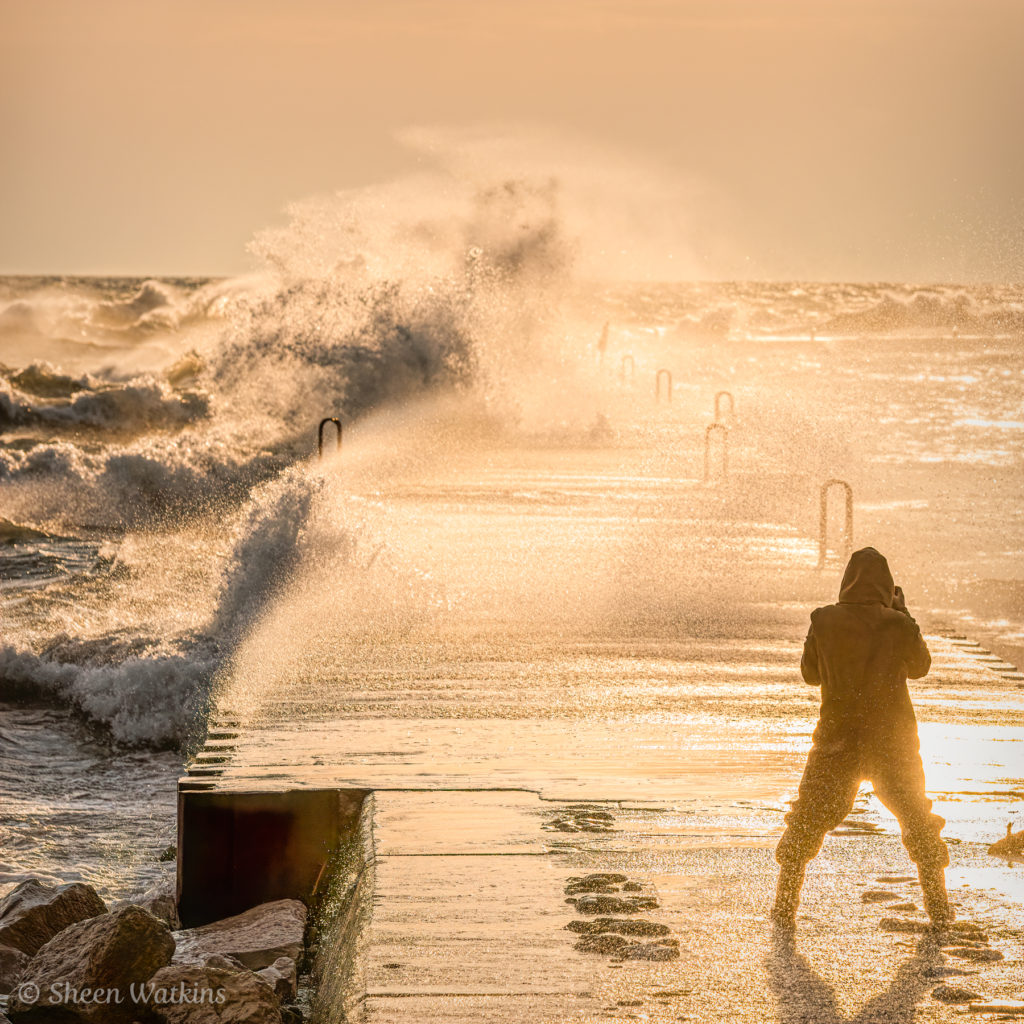
With this vital resource – every day should be Earth Day. We continue to hear our Earth is getting a break with our social distancing. Less pollution, less crowds and more activity in our woods and waters. Let's take a look at the many ways we can embrace and celebrate water in our photography.
Water Photography – Simple, Complex and Powerful
The Stages of Water
We see water form in solids, such as ice. Water remains wet and fluid in her liquid state. When she gets gassy (you knew it was coming!), you see fogs and mists.
Each of these stages transform right before our eyes in nature. We as photographers translate water's moods into images that sparkle, glisten and glow. We'll share examples and shooting techniques too.
Liquid
When water moves, it may gently roll down a stream, a waterfall. Or, she'll power shower her way down craggy cliffs and waterfalls. Let your eye and emotion guide you to the techniques you choose.
If you're wanting texture, to convey the rush of the water, the droplets as they splash, a fast shutter speed captures and freezes the movement. If your waterfall is a massive rush of movement, using a speed of 1/500 and higher may be needed for clear texture.
If it's a slow moving waterfall, soothing body of water, a shutter speed of 1/100 to 1/250 is a starting point.
As you survey the scene, consider what the scene feels like. Also, think about what you'll wish for when you're back home in post processing. Typically, I find that when I'm shooting the stages of water I want fast, sharp details and slow dreamy moments.
Examples of Water Photography:
Using the two images below, the first one was mid-morning with winds flowing at 10 -15 miles per hour on Lake Michigan. A shutter speed of 1/500 captured the texture of the water, waves and clouds. Don't let those lovely colors fool you, though. It was still 32 degrees outside!
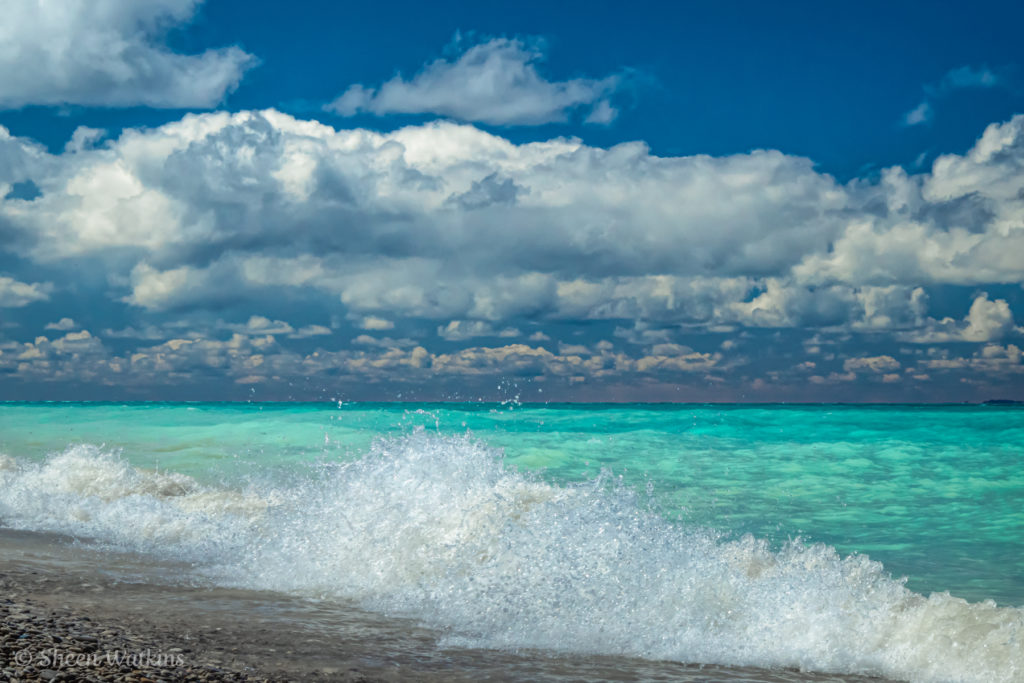
The next image is a hybrid. The rush of the 30 miles per hour winds, turbulent waves (and the sand pelting us) required a very fast shutter speed to capture both freezing and smooth water movement. With this shoot, my shutter speeds ranged the gamut from 1/100 to 1/1250. The image below was at 1/1250. The light shifted quickly, bracketing my shots gave me more to choose from in post.
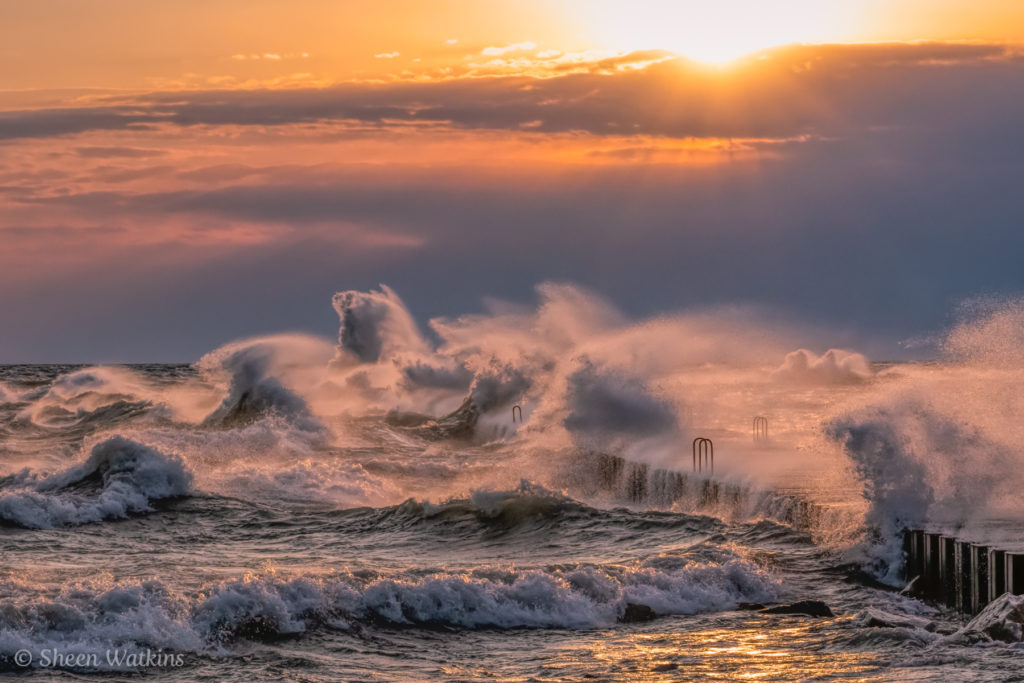
Processing tip: Both images were processed in Lightroom. When working with water, there's a natural glow. To enhance richness and depth of colour, I use the Vibrance Slider combined with the Split Toning Sliders during my workflow. This combo softly elevates glow and intensity.
Both of these adjustments can be overdone. At the same time, under processed images lack sparkle. Try pushing the sliders to extremes and then pull back to your eye's preference.
Photographing Fog and Mist
Ah, the romance of a misty moment. The chill of dark, lurking shadows emerging from the fog. The glow of the sun's rays through the rising vapour. Where there's fog, there's mood.
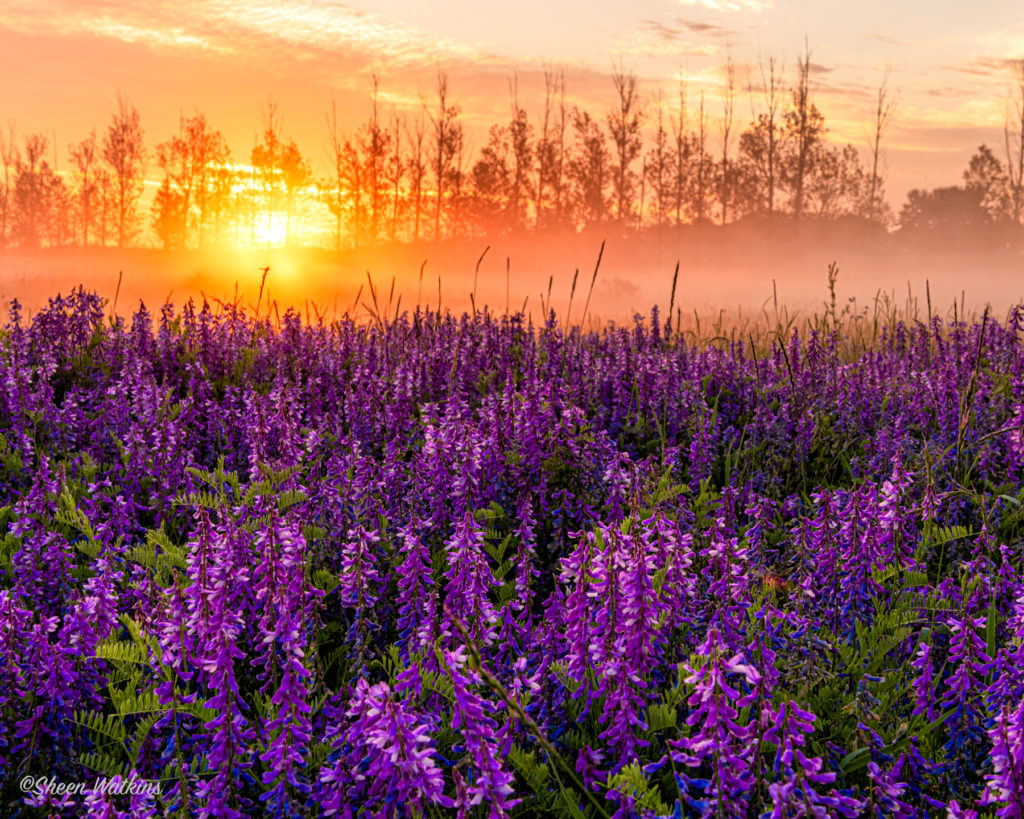
Just as in our liquid state, shutter speed plays a big role.
From light and filmy to thick and haunting, fog’s density creates the overall feeling of an image. On cool summer mornings, misty mornings are refreshing. Conversely, in dark settings, a sense of mystery emerges.
- Silky, buttery fog – Longer shutter speeds creates smooth, flowing mist. The longer the shutter speed, the more dense the fog. The density ranges from a light haze with a 1/2 second to a few seconds. A thick blanket begins to emerge with even longer shutter speeds.
- Textured, choppy, rays of light – Faster shutter speeds separates fog from the surrounding air. Shapes, density and movement stops.
When photographing fog and mist, a few additional tips:
- Always have lens wipes ready along with a towel. As the fog rises so does the moisture. Within minutes, your lenses and gear can easily get wet. These supplies will prevent ending your shoot early.
- Neutral density filters (I use B&W filters) slow down the light, allowing for longer shutter speeds.
- For sharper images, use a tripod and remote cable release or your camera's exposure delay mode.
Water as a Solid
When water is frozen, we see ice, snow and frost. Winter's chill brings solid forms across landscapes. From blistering, snowy storms to ice formations, climatic photographs share textures of winter's chill.
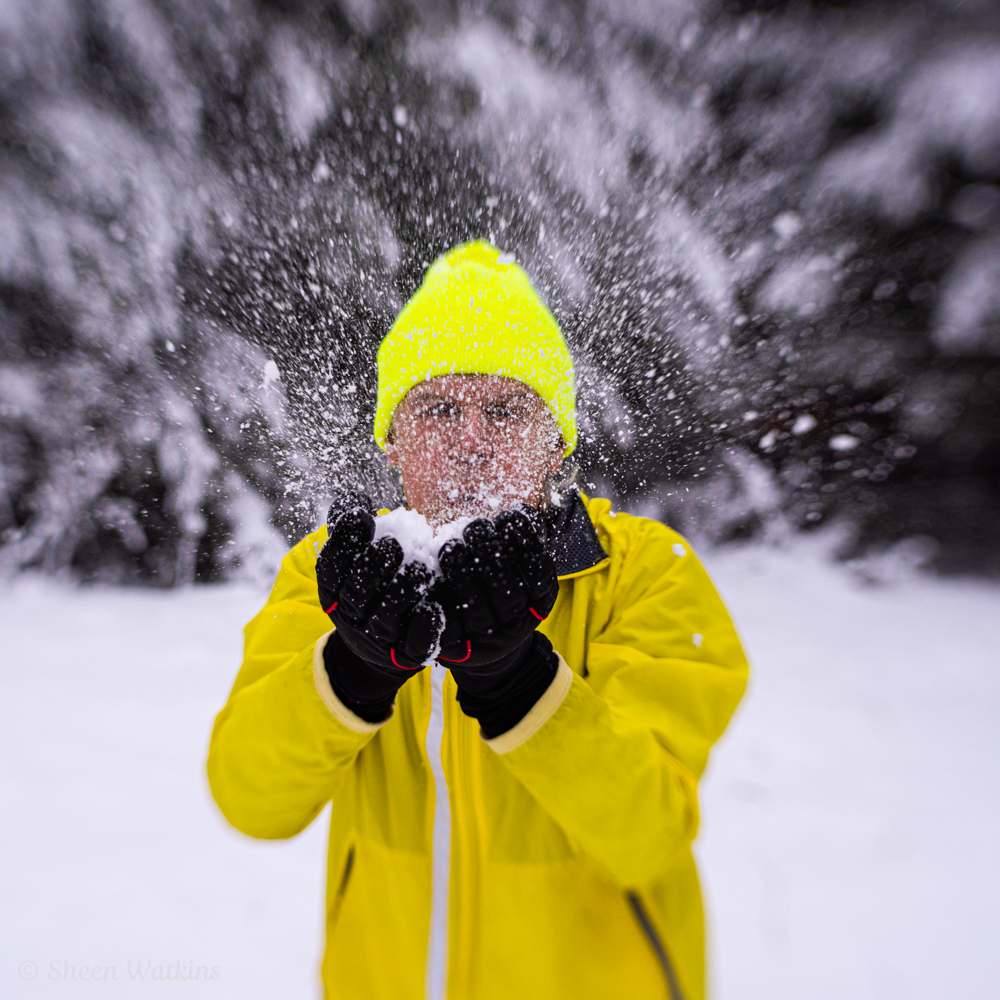
Anywhere there's ice, there's opportunity – even in a glass of ice and water.
Pick your subject, select your focal length and let your imagination take hold. Here's a few ideas to ignite the chill:
- The human element – add action and adventure in photographing sports, fun activities and outdoor events.
- Textures and details – macro moments await with snowflakes, textures in the ice, unusual formations.
- Sweeping landscapes – backlit ice scapes, white covered terrain, contrast or blend with big skies.
- Weather's impact – sun and snow, clouds and storms, brutal winds and waves bring viewers in to the chill (while they're staying warm).
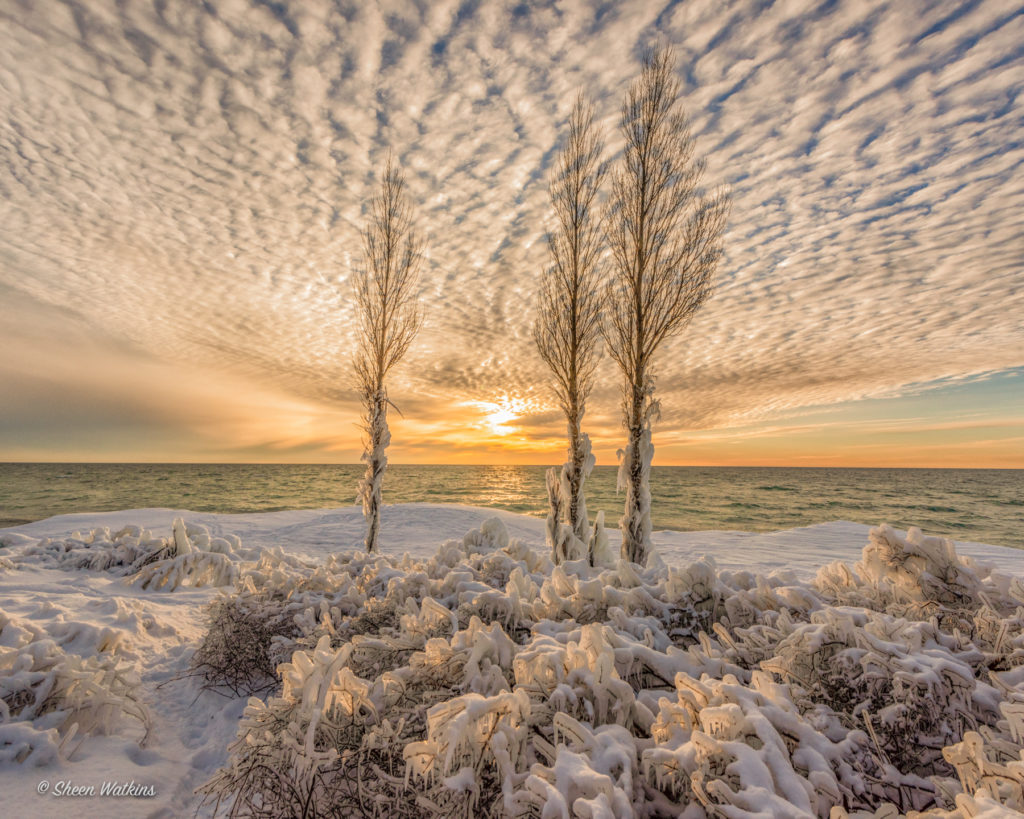
When photographing in the bitter elements, personal safety and gear care require forethought. And, dressing in clothing layers to keep you warm as the weather changes throughout the day.
What lenses should you use? The one in your hands. Sure, there are some lenses that are optimal for various subjects. However, you're the artist, the creator of what is captured to final image.
Related read: Jason Row recently wrote a Light Stalking article: The Best Guide to Photographing Mist and Fog. Filled with terrific tips, I'd highly recommend taking the time to invest in this read.


